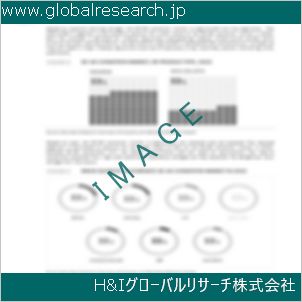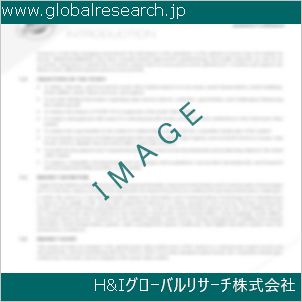Table of Contents
1 Industry Overview of S-Seven
1.1 Definition and Specifications of S-Seven
1.1.1 Definition of S-Seven
1.1.2 Specifications of S-Seven
1.2 Classification of S-Seven
1.3 Applications of S-Seven
1.3.1 Nuclear Application
1.3.2 Non-Nuclear Application
1.4 Industry Chain Structure of S-Seven
1.5 Industry Overview and Major Regions Status of S-Seven
1.5.1 Industry Overview of S-Seven
1.5.2 Global Major Regions Status of S-Seven
1.6 Industry Policy Analysis of S-Seven
1.7 Industry News Analysis of S-Seven
2 Manufacturing Cost Structure Analysis of S-Seven
2.1 Raw Material Suppliers and Price Analysis of S-Seven
2.2 Equipment Suppliers and Price Analysis of S-Seven
2.3 Labor Cost Analysis of S-Seven
2.4 Other Costs Analysis of S-Seven
2.5 Manufacturing Cost Structure Analysis of S-Seven
2.6 Manufacturing Process Analysis of S-Seven
3 Technical Data and Manufacturing Plants Analysis of S-Seven
3.1 Capacity and Commercial Production Date of Global S-Seven Major Manufacturers in 2023
3.2 Manufacturing Plants Distribution of Global S-Seven Major Manufacturers in 2023
3.3 R&D Status and Technology Source of Global S-Seven Major Manufacturers in 2023
3.4 Raw Materials Sources Analysis of Global S-Seven Major Manufacturers in 2023
4 Capacity, Production and Revenue Analysis of S-Seven by Regions, Types and Manufacturers
4.1 Global Capacity, Production and Revenue of S-Seven by Regions 2019-2024
4.2 Global and Major Regions Capacity, Production, Revenue and Growth Rate of S-Seven 2019-2024
4.3 Global Capacity, Production and Revenue of S-Seven by Types 2019-2024
4.4 Global Capacity, Production and Revenue of S-Seven by Manufacturers 2019-2024
5 Price, Cost, Gross and Gross Margin Analysis of S-Seven by Regions, Types and Manufacturers
5.1 Price, Cost, Gross and Gross Margin Analysis of S-Seven by Regions 2019-2024
5.2 Price, Cost, Gross and Gross Margin Analysis of S-Seven by Types 2019-2024
5.3 Price, Cost, Gross and Gross Margin Analysis of S-Seven by Manufacturers 2019-2024
6 Consumption Volume, Consumption Value and Sale Price Analysis of S-Seven by Regions, Types and Applications
6.1 Global Consumption Volume and Consumption Value of S-Seven by Regions 2019-2024
6.2 Global and Major Regions Consumption Volume, Consumption Value and Growth Rate of S-Seven 2019-2024
6.3 Global Consumption Volume and Consumption Value of S-Seven by Types 2019-2024
6.4 Global Consumption Volume and Consumption Value of S-Seven by Applications 2019-2024
6.5 Sale Price of S-Seven by Regions 2019-2024
6.6 Sale Price of S-Seven by Types 2019-2024
6.7 Sale Price of S-Seven by Applications 2019-2024
6.8 Market Share Analysis of S-Seven by Different Sale Price Levels
7 Supply, Import, Export and Consumption Analysis of S-Seven
7.1 Supply, Consumption and Gap of S-Seven 2019-2024
7.2 Global Capacity, Production, Price, Cost, Revenue, Supply, Import, Export and Consumption of S-Seven 2019-2024
7.3 USA Capacity, Production, Price, Cost, Revenue, Supply, Import, Export and Consumption of S-Seven 2019-2024
7.4 EU Capacity, Production, Price, Cost, Revenue, Supply, Import, Export and Consumption of S-Seven 2019-2024
7.5 China Capacity, Production, Price, Cost, Revenue, Supply, Import, Export and Consumption of S-Seven 2019-2024
7.6 Japan Capacity, Production, Price, Cost, Revenue, Supply, Import, Export and Consumption of S-Seven 2019-2024
8 Major Manufacturers Analysis of S-Seven
8.1 Manufacturer One
8.1.1 Company Profile
8.1.2 Product Picture and Specifications
8.1.2.1 Type I
8.1.2.2 Type II
8.1.2.3 Type III
8.1.3 Capacity, Production, Price, Cost, Gross and Revenue
8.1.4 Contact Information
8.2 Manufacturer Two
8.2.1 Company Profile
8.2.2 Product Picture and Specifications
8.2.2.1 Type I
8.2.2.2 Type II
8.2.2.3 Type III
8.2.3 Capacity, Production, Price, Cost, Gross and Revenue
8.2.4 Contact Information
8.3 Manufacturer Three
8.3.1 Company Profile
8.3.2 Product Picture and Specifications
8.3.2.1 Type I
8.3.2.2 Type II
8.3.2.3 Type III
8.3.3 Capacity, Production, Price, Cost, Gross and Revenue
8.3.4 Contact Information
8.4 Manufacturer Four
8.4.1 Company Profile
8.4.2 Product Picture and Specifications
8.4.2.1 Type I
8.4.2.2 Type II
8.4.2.3 Type III
8.4.3 Capacity, Production, Price, Cost, Gross and Revenue
8.4.4 Contact Information
8.5 Manufacturer Five
8.5.1 Company Profile
8.5.2 Product Picture and Specifications
8.5.2.1 Type I
8.5.2.2 Type II
8.5.2.3 Type III
8.5.3 Capacity, Production, Price, Cost, Gross and Revenue
8.5.4 Contact Information
…
9 Marketing Trader or Distributor Analysis of S-Seven
9.1 Marketing Channels Status of S-Seven
9.2 Traders or Distributors with Contact Information of S-Seven by Regions
9.3 Ex-work Price, Channel Price and End Buyer Price Analysis of S-Seven
9.4 Regional Import, Export and Trade Analysis of S-Seven
10 Industry Chain Analysis of S-Seven
10.1 Upstream Major Raw Materials Suppliers Analysis of S-Seven
10.1.1 Major Raw Materials Suppliers with Contact Information Analysis of S-Seven
10.1.2 Major Raw Materials Suppliers with Supply Volume Analysis of S-Seven by Regions
10.2 Upstream Major Equipment Suppliers Analysis of S-Seven
10.2.1 Major Equipment Suppliers with Contact Information Analysis of S-Seven
10.2.2 Major Equipment Suppliers with Product Pictures Analysis of S-Seven by Regions
10.3 Downstream Major Consumers Analysis of S-Seven
10.3.1 Major Consumers with Contact Information Analysis of S-Seven
10.3.2 Major Consumers with Consumption Volume Analysis of S-Seven by Regions
10.4 Supply Chain Relationship Analysis of S-Seven
11 Development Trend of Analysis of S-Seven
11.1 Capacity, Production and Revenue Forecast of S-Seven by Regions and Types
11.1.1 Global Capacity, Production and Revenue of S-Seven by Regions 2024-2029
11.1.2 Global and Major Regions Capacity, Production, Revenue and Growth Rate of S-Seven 2024-2029
11.1.3 Global Capacity, Production and Revenue of S-Seven by Types 2024-2029
11.2 Consumption Volume and Consumption Value Forecast of S-Seven by Regions, Types and Applications
11.2.1 Global Consumption Volume and Consumption Value of S-Seven by Regions 2024-2029
11.2.2 Global and Major Regions Consumption Volume, Consumption Value and Growth Rate of S-Seven 2024-2029
11.2.3 Global Consumption Volume and Consumption Value of S-Seven by Types 2024-2029
11.2.4 Global Consumption Volume and Consumption Value of S-Seven by Applications 2024-2029
11.3 Supply, Import, Export and Consumption Forecast of S-Seven
11.3.1 Supply, Consumption and Gap of S-Seven 2024-2029
11.3.2 Global Capacity, Production, Price, Cost, Revenue, Supply, Import, Export and Consumption of S-Seven 2024-2029
11.3.3 USA Capacity, Production, Price, Cost, Revenue, Supply, Import, Export and Consumption of S-Seven 2024-2029
11.3.4 EU Capacity, Production, Price, Cost, Revenue, Supply, Import, Export and Consumption of S-Seven 2024-2029
11.3.5 China Capacity, Production, Price, Cost, Revenue, Supply, Import, Export and Consumption of S-Seven 2024-2029
11.3.6 Japan Capacity, Production, Price, Cost, Revenue, Supply, Import, Export and Consumption of S-Seven 2024-2029
12 New Project Investment Feasibility Analysis of S-Seven
12.1 New Project SWOT Analysis of S-Seven
12.2 New Project Investment Feasibility Analysis of S-Seven
13 Conclusion of the Global S-Seven (CAS 3792-59-4) Industry 2024 Market Research Report
| ※参考情報 S-セブン(S-Seven)は、化学物質の一つで、CAS番号3792-59-4で特定されます。この物質は、さまざまな産業や研究の分野で利用される特徴的な化合物であり、その特性や応用は多岐にわたります。以下に、S-セブンの概念、特徴、種類、用途、関連技術について詳しく述べます。 まず、S-セブンの定義についてですが、これは特定の化学構造を持つ物質であり、主に有機化学の分野で研究されています。その化学結合や分子構造の特性から、さまざまな反応性を示すことがあり、これが応用面での多様性を生んでいます。 次に、S-セブンの特徴について触れます。一般的に、S-セブンはその安定性、反応性、溶解性などから他の化合物と比較されます。例えば、多くの有機溶媒に溶けやすいという特性があり、そのため化学反応において中間体として使用されることがあります。また、温度や圧力による影響を受けにくい安定した性質を持つ点も重要です。これにより、実験条件の変動があっても予測可能な反応を示すことができます。 S-セブンにはいくつかの種類が存在し、それぞれが異なる用途に合わせて最適化されています。さまざまな官能基を有する誘導体が作製され、それによって異なる化学的特性や生物活性を示すことが可能です。これにより、特定の用途に対して専用設計された化合物が提供されることになります。 S-セブンの具体的な用途としては、主に農業、医薬品、材料科学などが挙げられます。農業分野では、S-セブンが農薬や肥料の成分として利用されることがあります。植物の成長を促進する作用を持つことから、特に有機栽培や環境に優しい農業手法において重要な役割を果たしています。また、医薬品の開発においては、その構造を基にした新しい薬剤の設計が行われており、抗がん剤や抗生物質の前駆体としての可能性が探求されています。さらに、材料科学においては、ポリマーの合成や新しい素材の開発に寄与することが期待されています。 関連技術としては、S-セブンの合成法や、反応条件に関する研究が進められています。たとえば、触媒を用いることで反応性を高めたり、選択反応を促進する技術が開発されています。このような技術革新により、S-セブンの生産効率やコスト削減が実現され、さらに新しい応用分野へと展開されることが考えられます。 また、S-セブンに関連する安全性や環境影響についても考慮しなければなりません。化学物質としての性質により、取り扱いや廃棄方法には十分な注意が必要です。そのため、関連する法規制を遵守し、安全な使用が求められます。近年では、持続可能な化学の観点からも、より環境に優しい方法で合成や利用が模索されています。 S-セブンは、その特異な化学的性質と多くの応用可能性によって、今後も注目され続けるでしょう。新しい発見や技術革新が進む中で、より広範な用途が開発され、私たちの生活や産業に貢献していくことが期待されます。これからの研究や応用において、S-セブンが果たす役割はますます重要になると考えられます。 総じて、S-セブンの特徴や応用の多様性は、現代の科学技術の進展において欠かせない要素であり、その理解を深めることは、さまざまな分野でのイノベーションを促進するために非常に重要です。私たちの未来の産業や研究において、S-セブンが果たす役割はますます大きくなることでしょう。 |
❖ 免責事項 ❖
http://www.globalresearch.jp/disclaimer












